See the History of Ticker-Tape Parades Beneath Your Feet on Broadway’s Canyon of Heroes
Uncover the history of NYC's confetti-covered parades that have been running since the 1880s!


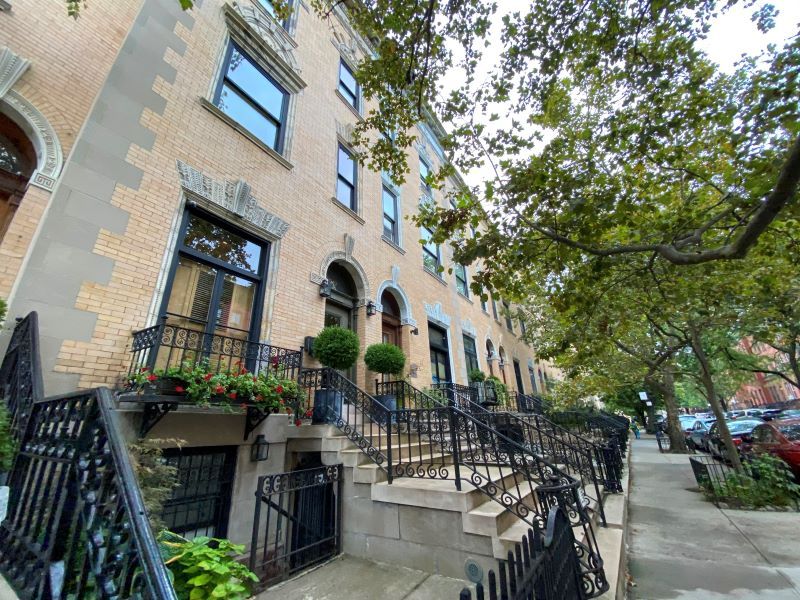
In the 1920s and 1930s, Harlem was buzzing with the roaring sounds of jazz, the chatter of new ideas, and new rhythms of poetry. The Upper Manhattan neighborhood was the birthplace and namesake of the Harlem Renaissance, a cultural revival of African American music, dance, art, literature, theater, politics, and scholarship that continued to inspire artists well into the twentieth century. The most prominent artists of the Harlem Renaissance were writers Claude McKay, Countee Cullen, and Langston Hughes, musicians Louis Armstrong, Jelly Roll Morton, and Duke Armstrong, and visual artists, Aaron Douglas and James Van Der Zee. Other cultural figures, such as celebrated jazz singer Ella Fitzgerald, made their debut against the vibrant background of Harlem. To celebrate the centenary of the movement’s beginnings, here are 10 historical sites commemorating the enduring cultural legacy of the Harlem Renaissance.
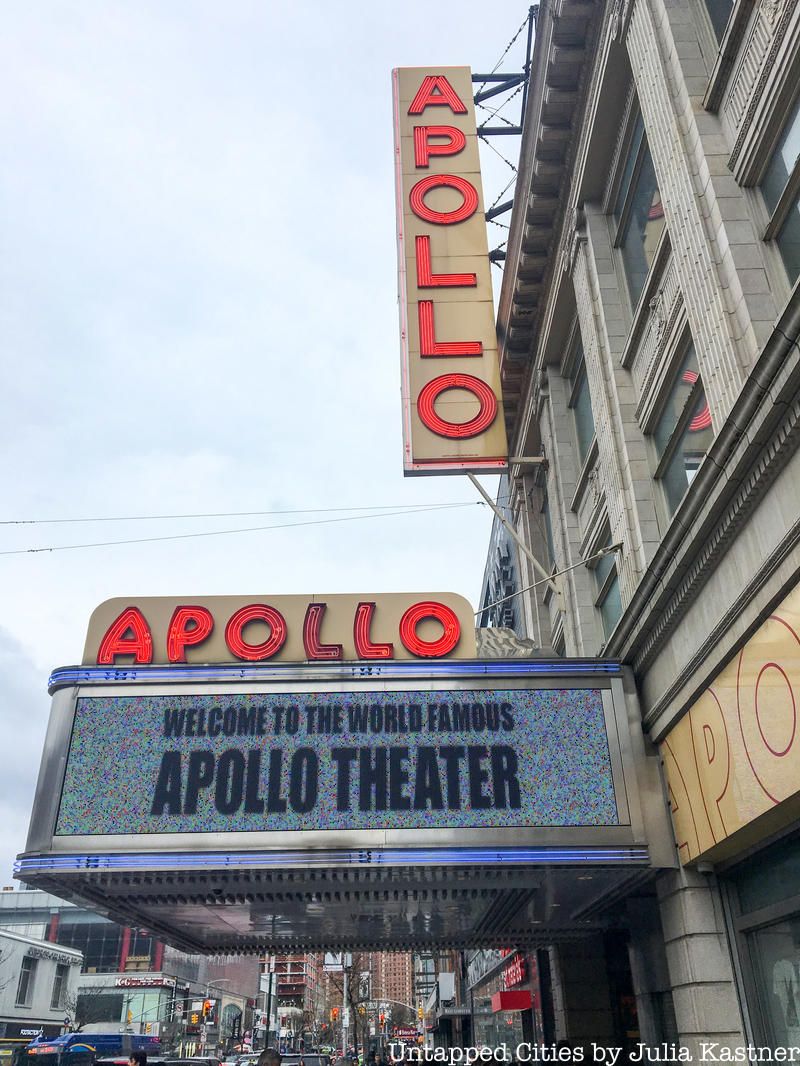
Located on 125th Street, this historic Harlem theater played host to the birth of jazz music in the 1920s and 1930s. Ted Fox, author of the book “Showtime at the Apollo,” claims that “the Apollo probably exerted a greater influence upon popular culture than any other entertainment venue in the world. For blacks, it was the most important cultural institution – not just the greatest black theater, but a special place to come of age emotionally, professionally, socially, and politically.” Originally Hurtig and Seamon’s New Burlesque Theatre, in 1934 it introduced regular Amateur Night shows hosted by Ralph Cooper along with old-time vaudeville acts and grew to national prominence by featuring celebrations of Black culture.
Billed as a “place where stars are born and legends are made,” the Apollo became famous for launching the careers of prominent Black performers, such as Billie Holiday, James Brown, Stevie Wonder, and even Michael Jackson. Other celebrated artists and groups such as Duke Ellington, Diana Ross & The Supremes, The Jackson 5, Marvin Gaye, Stevie Wonder, Aretha Franklin, and Mariah Carey have also graced the Apollo’s stage. Ella Fitzgerald made her debut at one of the earliest Amateur Nights in 1934 at the age of just 17, singing Hoagy Carmichael’s “Judy” and “The Object of My Affection” in a performance that would win her the first prize of $25.00. Jimi Hendrix also won first prize in the Apollo’s amateur musician contest in 1964.
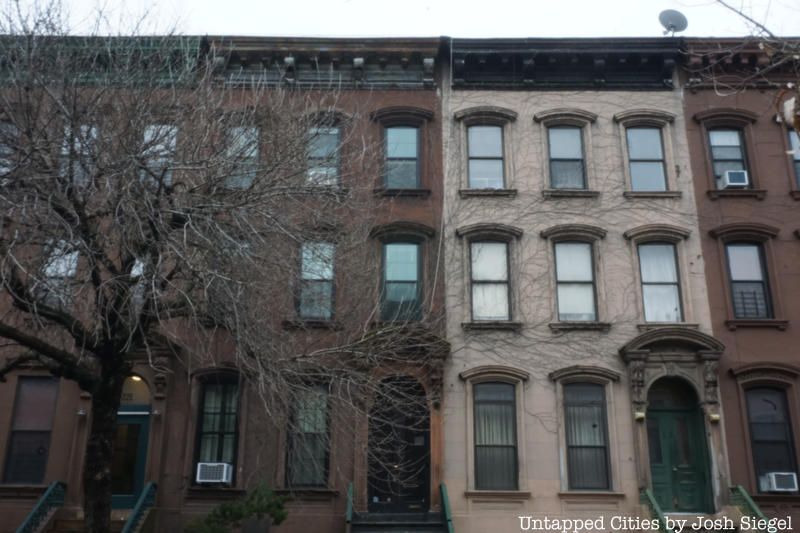
The home of one of the Harlem Renaissance’s most famous writers still stands at 20 East 127th Street. Known as the Poet Laureate of Harlem, Langston Hughes was a legendary Black poet and activist. Arriving in New York City from Missouri in 1921 to attend Columbia University, Hughes and his poetry became closely associated with the neighborhood of Harlem. He lived at this Italian brownstone (the one with the black door in the photo) from 1947 to 1967 during the last two decades of his life. The home was designated as an official NYC Landmark in 1981. The I, Too, Arts Collective now uses the house as a community space for emerging artists and writers and hosts creative workshops, seminars, and poetry salons dedicated to developing underrepresented voices. The main floor functions as a learning center where visitors can learn more about the author and view his original typewriter on display in the parlor.
A poet, novelist, and playwright, Hughes’s writing celebrated African American identity and culture. He was an early innovator of jazz poetry, a genre-bending literary form that adopted jazz-like rhythm or the feel of improvisation. Some of his most famous works include the poems “Harlem,” “Mother to Son,” “The Weary Blues,” and “A Dream Deferred.” Hughes is widely remembered today for his advocacy for Black literature and culture, trailblazing use of literary form, leadership during the civil rights movement, and status as an LGBT+ icon.
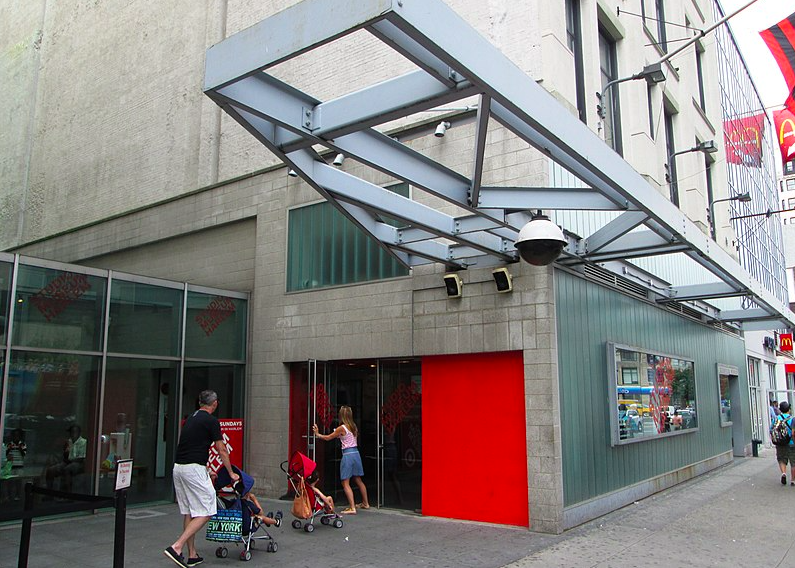
The Studio Museum at 144 W 125th Street in Harlem may have opened in 1968, decades after the Harlem Renaissance, but it hosts one of the most comprehensive collections of Harlem Renaissance art in the world. It aims to be an artistic nexus for African diasporic artists locally, nationally, and internationally, as well as to enrich the culture of its surrounding community. The museum prominently features the work of the artist James Van Der Zee, a leading photographer of the Harlem Renaissance. Van Der Zee opened his first photography studio on 135th Street in 1918, an era when the rebirth of jazz, poetry, and art was beginning to take off in Harlem. From 1916 to 1969, he operated his studio at various Harlem addresses and captured the likenesses of prominent local figures such as Marcus Garvey, the preacher Daddy Grace and Adam Clayton Powell, Sr.
Van Der Zee’s work captures wide-ranging scenes of Black life, from the every day to the aspirational. In an era when photography was rarely accessible or affordable to Black citizens – and portrayals of African American life in the national media were often stereotypical or negative – Van Der Zee revolutionized the way the Black body was photographed and presented. Many of his photographs capture warm and ordinary scenes of Harlem life, such as street scenes, group photos of local organizations and social clubs, and family and individual portraits. His commercial practice included portraits of famous individuals such as Muhammad Ali, Benny Andrews, Jean-Michel Basquiat, Countee Cullen, Marcus Garvey, and Bill “Bojangles” Robinson. His photographs also captured rare scenes of affluent and intellectual African Americans engaging in cultural activities such as reading, playing music, and attending the opera, indicative of the growing Harlem Renaissance movement. As of this publication, the museum is currently closed for renovations.
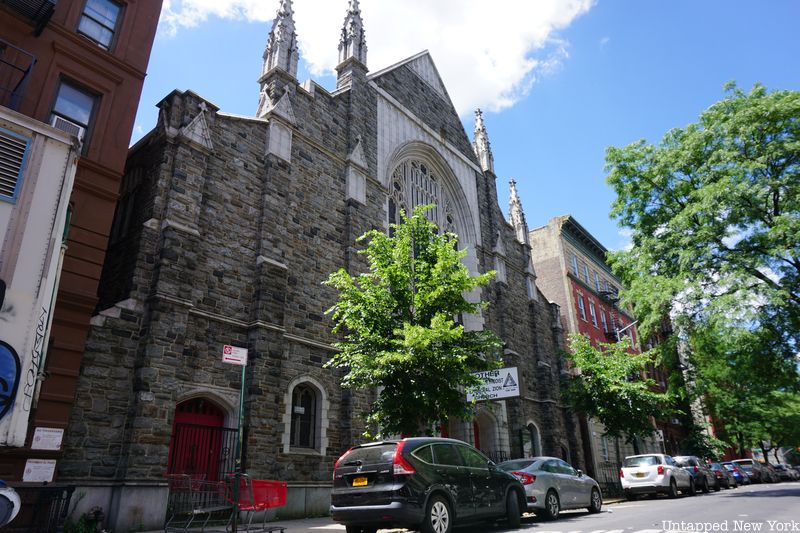
Mother African Methodist Episcopal Zion Church, led by Pastor James W. Brown from 1912 to 1936 and Dr. Benjamin C. Robeson from 1936-1963, was a leader in the civil rights movement that shaped Harlem from the 1920s to the 1960s. The church drew high-profile residents such as Langston Hughes, W.E.B. Du Bois, Marion Anderson, Roland Hayes, Joe Louis, and Paul Robeson. Spirituality played a significant role in the literature of the Harlem Renaissance: Countee Cullen’s “The Black Christ” compares the suffering of Christ with that of African-Americans; James Weldon Johnson wrote hymns and edited books of spirituals; Zora Neale Hurston examined Christian and African folk beliefs; Paul Robeson attended services at Mother Zion conducted by his activist brother, and Langston Hughes attended services and spoke at Mother Zion. Today, the church continues to stand as one of the country’s most prominent Black churches and a symbol of Harlem’s religious, cultural, and civil rights history.
The Mother African Methodist Episcopal Zion Church at 140-148 West 137th Street is the founding A.M.E. Zion branch and the sixth home of New York City’s first Black church. The impressive stone structure was built during the height of the Harlem Renaissance in 1923 to 1925 and was designated as an official New York City landmark in 1993. In the early 1920s, Mother Zion Church, then located at 151 West 136th Street, bought three churches on West 137th Street, which it demolished to construct a grander church representing its burgeoning identity and vision. The church hired George W. Foster Jr., one of the first Black architects registered in the United States and one of only 59 at the time, to design the imposing neo-Gothic structure.
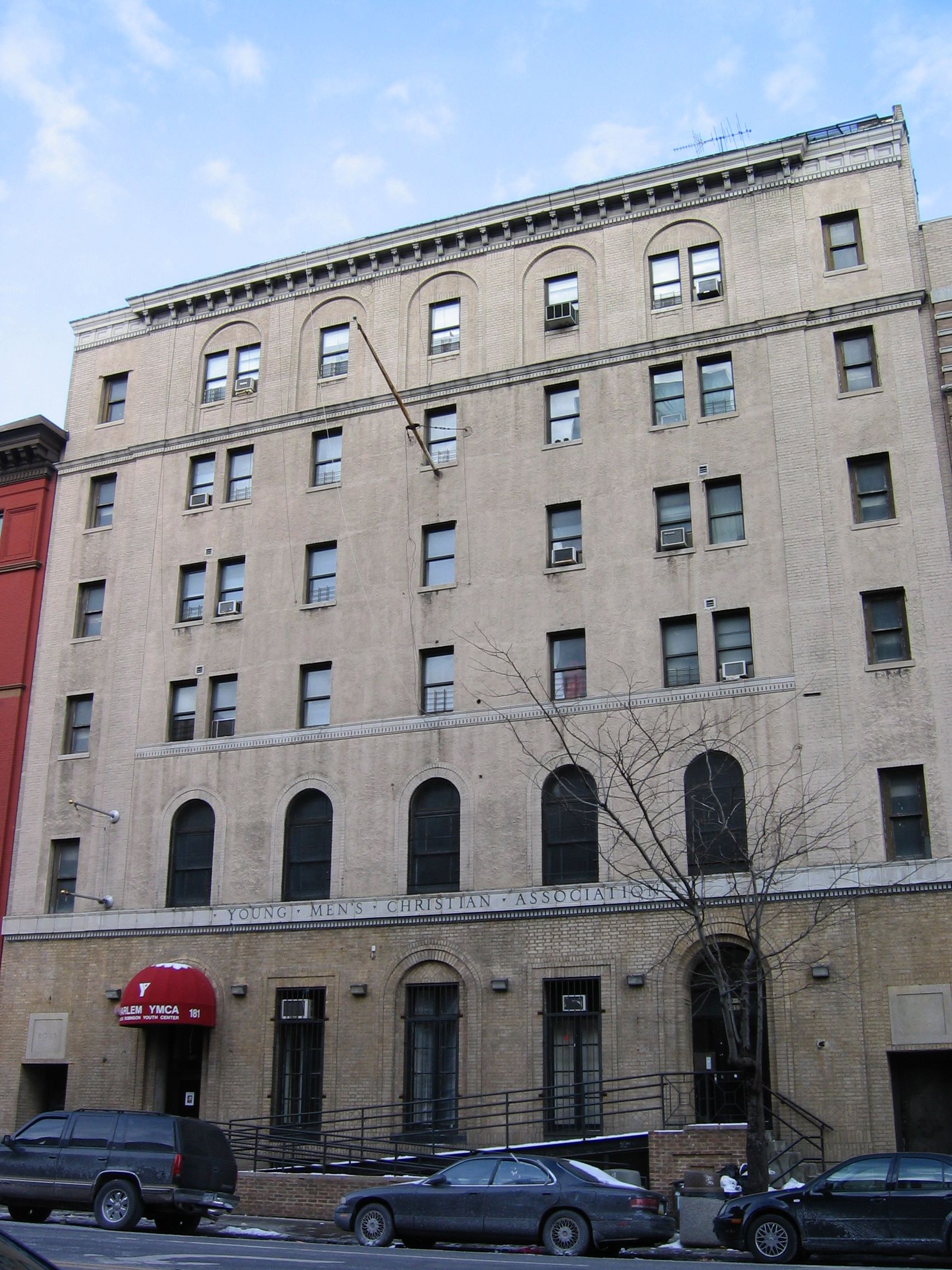
The original Harlem YMCA at 181 West 135th Street was a 226-room building designed in the style of an Italian palazzo and built in 1919 with money donated by Julius Rosenwald, the president of Sears, Roebuck, and Company. The branch established itself as a major community institution during the Harlem Renaissance, serving as both a center for local youth and as a temporary home for the visiting African American tourists and performers denied lodging in New York’s hotels because of racial discrimination, including renowned writers such as Ralph Ellison and Richard Wright; artists Jacob Lawrence and Aaron Douglas; and actors Ossie Davis and Ruby Dee. After a newly expanded YMCA was built across the street in 1933, the original building was remodeled as the Harlem YMCA Jackie Robinson Youth Center and received New York City landmark status in 2016.
In the 1920s the Harlem YMCA served as a gathering place for the local literary community, where the Harlem Writers’ Workshop met and authors such as Langston Hughes and Claude McKay gave lectures to crowds. The NAACP leader James Weldon Johnson lived both here and in an adjacent building between 1925 and 1938, where he published his poetry and sociological studies. The building continues to serve the local community while reminding observers of the neighborhood’s illustrious literary past.
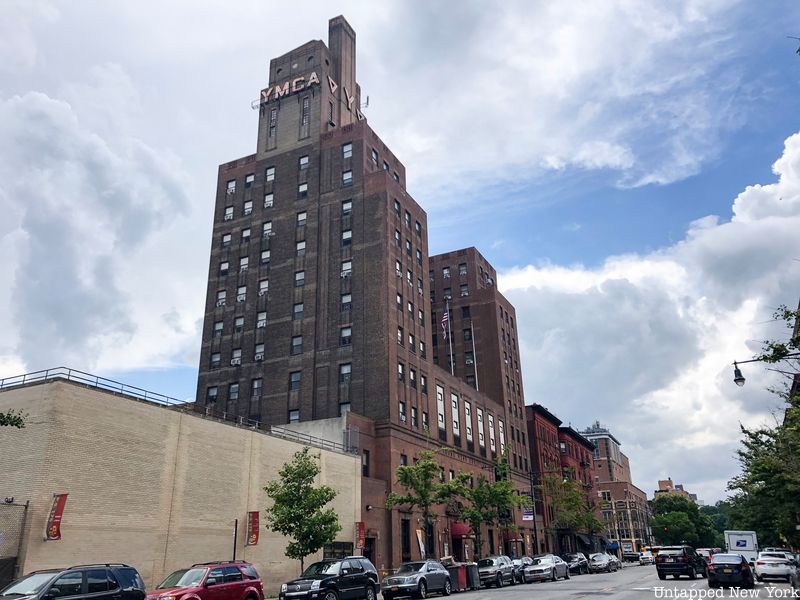
Before long, the growing YMCA required more room for counseling and community programming. In 1933 a red-brown brick building with neo-Georgian details was built at t 180 135th Street, directly across the street from the original YMCA. At a time when YMCAs were primarily intended for the use of white men, the building was one of the rare centers constructed for the African American community. One of the nation’s best-equipped YMCAs, it also functioned as a residence and hotel.
African-American author Maria Celeste lived in this building from 1941 to 1946, and it is famous as the home of the writer Claude McKay, a leading figure of the Harlem Renaissance who also resided here from 1941 to 1946. Many other notable Americans have stayed at the YMCA, including Malcolm X, and it features a mural by the prominent Black artist Aaron Douglas titled “The Evolution of Negro Dance.” The building was designated a National Historic Landmark in 1976 and a New York City Landmark in 1998 for its historical and cultural associations. Today, you can still rent rooms at the “Y” for a reasonable price to immerse yourself in the spirit and history of the local community.
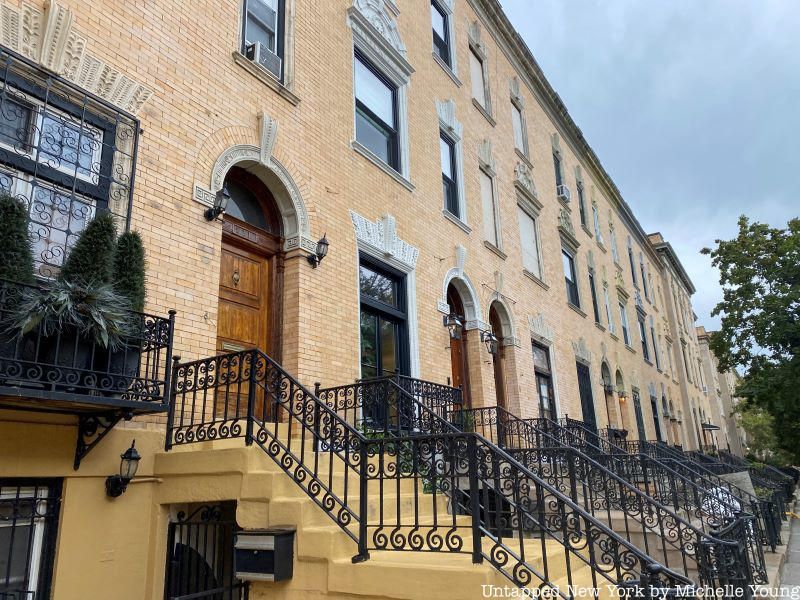
The St. Nicholas Historic District, known colloquially as “Strivers’ Row,” is a historic district located on West 138th and West 139th Streets between Adam Clayton Powell Jr. Boulevard and Frederick Douglass Boulevard in Harlem. Originally known as King Model Houses, the neighborhood is a designated historical landmark site consisting of row houses built from 1891 to 1893. When the architect David H. King Jr. failed to sell the homes to upper-middle class white residents, they were finally made available to African Americans in 1919 to 1920 for $8,000 each. The imposing townhouses attracted leaders of the Black community and upwardly mobile professionals, known locally as “strivers.”
Today, Strivers’ Row is a popular walking attraction known for its beautiful architecture and historic homes of renowned figures in music, politics, and entertainment. Notable African American residents who called the neighborhood home include the tap dancer Bill “Bojangles” Robinson, and Adam Clayton Powell Jr., the Congressman for whom the adjoining avenue is named. In popular culture, Strivers’ Row was considered to be home to Harlem’s elite and an aspirational symbol for many in the Black community. Since 1995, many of the residences have been restored to their original condition, and the neighborhood continues to host a historical website, public events, and walking tours to this day.
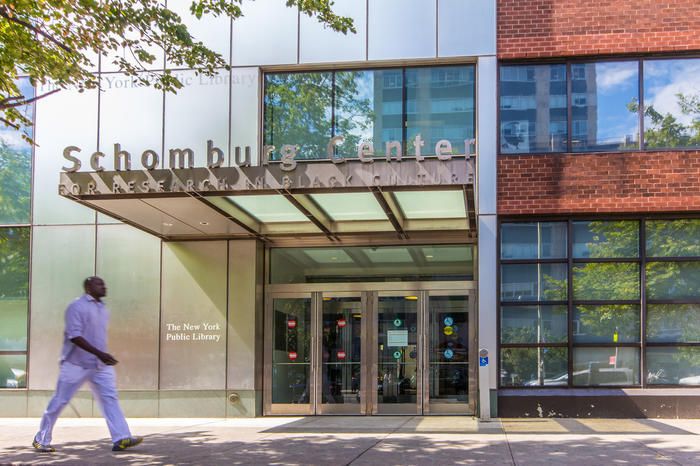
The Schomburg Center for Research in Black Culture, one of the New York Public Library’s research libraries, is a world-leading cultural institution devoted to the research, preservation, and exhibition of materials focused on African American culture. Located at 515 Malcolm X Boulevard, it currently serves as an archival repository for the history of people of African descent worldwide. The Schomburg Center’s collection is rooted in the work of a pioneering archivist, Arturo Alfonso Schomburg, a Puerto Rican author of African and German descent and curator of Black art and literature.
Schomburg immigrated to New York in 1891 and quickly immersed himself in his new community by joining the Harlem Renaissance. After becoming inspired to disprove a former teacher who claimed that Black people had no history, heroes, or accomplishments, Schomburg determined that he would find and document the accomplishments of the African diaspora. He co-founded the Negro Society for Historical Research and served as president of the American Negro Academy in an effort to support anti-racist scholarly research. In 1926, the 135th Street branch of the New York Public Library purchased his collection of archival materials for $10,000 and appointed him curator. Today, the Schomburg Center for Research in Black Culture is one of the most well-established and comprehensive centers for research on people of African descent. Much of the collection documents Schomburg’s extensive involvement in the Harlem Renaissance. Another special feature of the library is the floor mosaic in the lobby. Langston Hughes’ ashes are interred beneath the symbolic artwork on the floor.
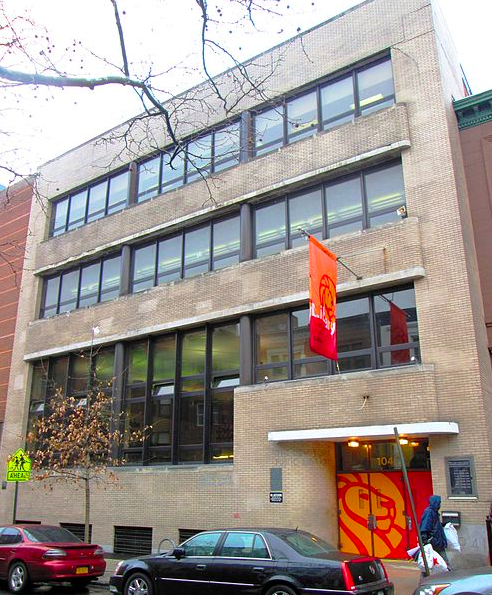
The Countee Cullen branch of the New York Public Library, located at 104 West 136th Street, boasts a long literary legacy dating back to the Harlem Renaissance. In addition to inspiring generations of Harlem’s readers, the library commemorates famed poet, novelist, and poet Countee Cullen, whose work explored African American culture and identity. Cullen’s most famous poetry collections, written during his involvement in the Harlem Renaissance in the 1920s, include Color, The Black Christ, and Copper Sun. Like many of the movement’s writers, Cullen lived in Harlem for most of his life and was deeply entrenched in the neighborhood’s literary and artistic community.
The site formerly housed the grand home of A’Lelia Walker, the only surviving heir to her mother Madam C. J. Walker’s beauty company. Popularly known as the first African-American woman to become a self-made millionaire, Madam C. J. Walker made a fortune hawking hair and beauty products catered to Black women. In the early 1900s, before and during her time as president of the company, A’Lelia became a fixture in Harlem’s social scene and a patron of the arts. She would host literary salons and dinner parties at her home with notable Harlem Renaissance artists in attendance, including Langston Hughes, Richard Bruce Nugent, and Aaron Douglas. The mansion was torn down in 1941 to make way for the library. As of his publication, the library is currently closed for renovations.
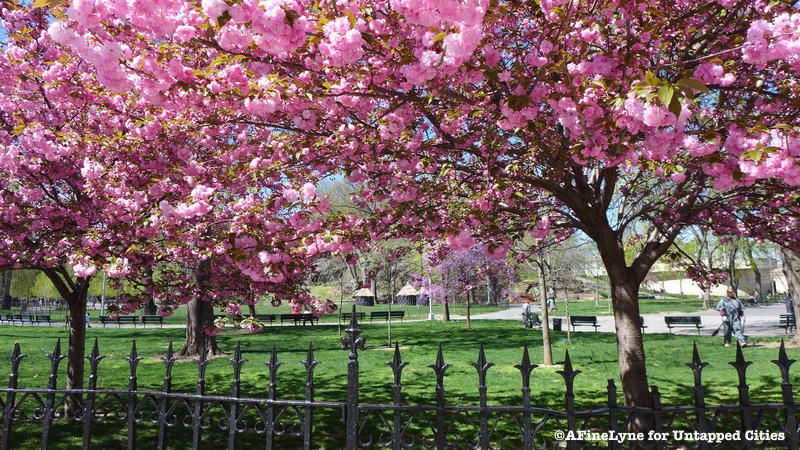
Located from East 120th Street to East 124th Street on Madison Avenue, this community park is named after Marcus Garvey, an influential Jamaican-born Pan-Africanist and political activist. Garvey is known as the founder of the first Black nationalist movement, the Universal Negro Improvement Association (UNIA) formed in Jamaica in 1914, which hoped to achieve Black nationalism through the celebration of African history and culture. After moving to Harlem in 1916, Garvey became one of the first activists to advocate that African Americans develop an appreciation of their African descent instead of viewing it as a badge of inferiority. He also founded the African Communities League, through which he declared himself Provisional President of Africa. Marcus Garvey’s fierce promotion of Black nationalism clashed with that of the 1920s Harlem establishment, specifically other Pan-Africanist intellectual leaders such as W.E.B. Du Bois, but he influentially advocated for the formation of African American diasporic identity and civil rights.
To commemorate Garvey’s significance to Harlem, Mount Morris Park was renamed Marcus Garvey Park in 1977. The 20-acre park includes two playgrounds, a pool, an amphitheater and public programs and classes for all ages year round. It is also home to a historic fire watchtower, one of the last of its kind in New York City. The park is surrounded by historic 19th and 20th-century architecture that allows observers to visualize Garvey’s neighborhood of the early 1900s. Today, the Harlem community continues to enjoy the park as a community resource and a center of entertainment and cultural expression.
Next, check out The Top 10 Secrets of Harlem and 8 NYC Homes of Famous Writers
Subscribe to our newsletter